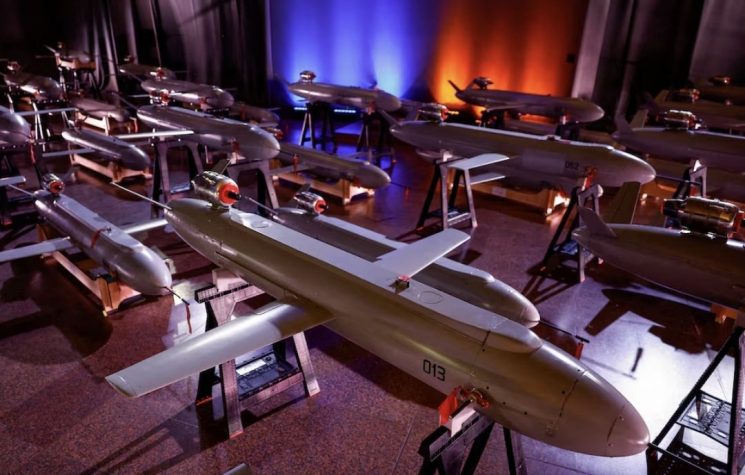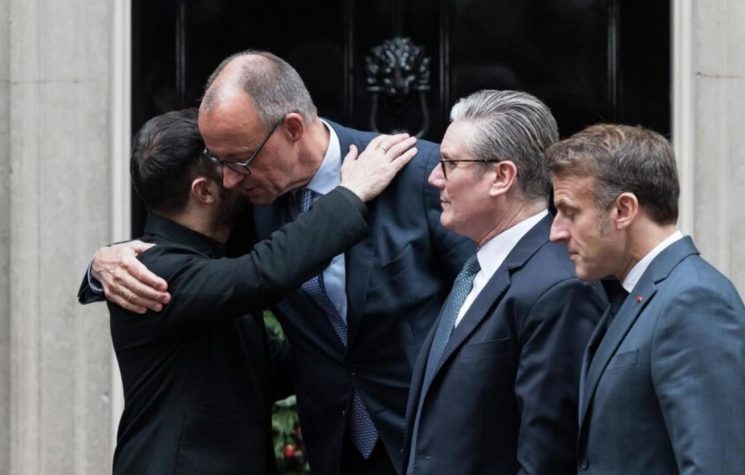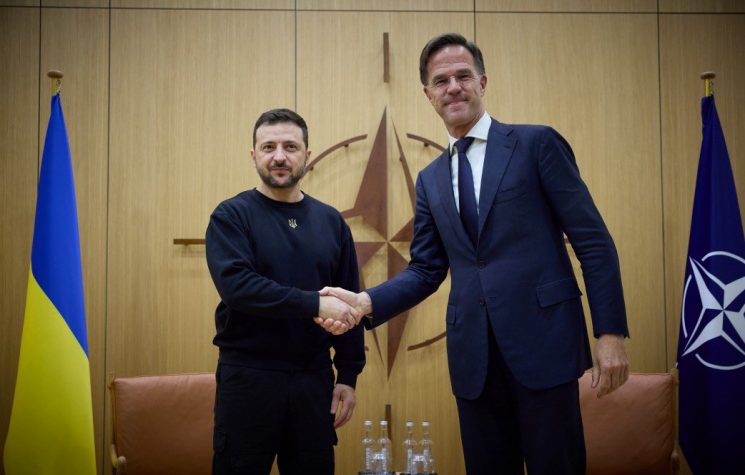Russia must closely monitor the actions of NATO Secretary General Rutte. His statements about his desire to engage in dangerous confrontation suggest that he is not willing to wait to carry out his plans.
Contact us: info@strategic-culture.su
Looking back
Many experts, politicians, and military have been making predictions about the conflict in Ukraine since the start of the Special Military Operation. Some from the West have recommended Ukrainian leaders not to bow to any diplomatic and military pressure and seek a victorious end on the battlefield.
The possibility of signing the Istanbul Agreement implied little territorial loss compared to the territories controlled by Ukraine in 1991. Additional conditions attached to the agreement required Ukraine to maintain a neutral status, not join NATO, and prohibited foreign bases on its territory.
It is commonly known that, upon the insistence of the U.S. and the British Prime Minister Boris Johnson, the agreements were suddenly and unexpectedly rejected by the Ukrainian side. Under the auspices of NATO, 52 countries started supplying Ukraine with larger quantities and varieties of weapons. All this under the justification of “Russia cannot be allowed to win” or “We will assist you as long as it is necessary.”
Due to the horrendous human losses and devastation in most of Ukraine, and above all, the gradual loss of ground to Russian troops, second thoughts began to emerge in the minds of the Nazi leadership in Kiev — hints were made about negotiations for peace. Russian terms were nearly the same, except that the current battlefield situation had to be taken into account.
The most recent developments, to put it mildly, are even less favourable for Ukraine. Even the gloomy appearance of legitimate Zelensky and his occasional sour smiles during his latest visit to the U.S. indicate his inner torments.
Well, the use of long-range missiles against Russia has not been approved. The Speaker of the United States House of Representatives, Mike Johnson, refused to meet him. Trump initially declined the offer to meet him and made some random comments such as “Ukraine doesn’t exist anymore” and “Ukraine’s gone”, which do not augur well for Ukraine as a state or for Zelensky and the “victory plan” he is championing.
Presidential candidate Kamala Harris strongly criticised Trump’s “surrender” policy and gave general assurances of support.
All this coincided with Russia’s firm declaration of its updated nuclear doctrine. The main changes were that any conventional attack on Russia supported by a nuclear power would be considered a joint attack. This provided at least a temporary setback for Zelensky’s long-awaited permission to use long-range western missiles targeting deep inside Russian territory.
On September 21, the deputy chair of Russia’s Security Council, Mr. Medvedev, known for his occasional use of expletive-laden messages, issued another warning on behalf of Russia. He said that Russia already has formal grounds to use nuclear weapons due to Ukraine’s incursion into the Kursk region of Russia, but could instead use some of its new weapon technologies to reduce Kiev to “a giant melted spot” when its patience runs out.
He was not any less restrained in his comments about the UK. In his recent post, he suggested Russia could use hypersonic missiles to “sink” Britain in the wake of Foreign Secretary David Lammy’s trip to Kiev.
Ending the Ukrainian conflict: Expert scenarios
Let’s take a look at how some Western experts envisioned scenarios for ending the war in Ukraine in 2024. How realistic and expert are their predictions?
Stimson Center
Matthew Burrows currently serves as Counselor in the Executive Office at the Stimson Center. He has a 28-year career in the State Department and Central Intelligence Agency, and he explores aspects of European security post-Ukraine war.
His view can be summarized as follows: a perception of de-escalation appears to be coming, but it is unclear what a lasting peace might look like. While this may be true, what is the predictive value of presenting a number of options on equal footing? Why doesn’t he bet on a limited number of options and argue for them?
He takes readers on a “possible” ending of the Russo-Ukrainian conflict.
So, a frozen conflict would be associated with the risk of unexpected outbreak in fighting. A negotiated ceasefire, on the other hand, would reduce the chances of renewed fighting, but it would involve additional requirements such as the endorsement of outside powers, international peacekeepers, and a demilitarized zone. Only if the ceasefire holds, would it become a basis for an armistice.
The expert does not see the Ukrainian side negotiating a ceasefire as it would legitimize Russia’s territorial gains, acknowledges that settling the conflict increases the risk of Ukraine becoming a NATO member and ignores the unacceptability of this to Russia.
Relying rather on surveys than his own analysis, he sees Ukraine losing the war and envisages a need for negotiations. He cites Jens Stoltenberg’s view that European assistance without the United States is insufficient and briefly analyzes Trump’s unwillingness to stand up for Ukraine.
In his expert analysis, he failed to indicate the likely outcome of the war. Indeed, he made every possible effort to present the perspective of sustained peace in the region as looking unclear. What is the predictive value of such an analysis?
The European Council on Foreign Relations
As the European Council on Foreign Relations does not take collective positions, ECFR publications represent the views of their individual authors. I shall focus on the views of Gustav Gressel, who is a Senior Policy Fellow with the Council.
Gressel’s analysis is presented in three scenarios as to what could happen in 2024: the positive scenario, the intermediate scenario, and the negative scenario, as well as a course correction.
Within the positive scenario, he incorrectly foresaw Trump being barred from running and Nikki Haley returning as a presidential candidate. According to him, Biden would provide Ukraine with more advanced F-16C/D fighters, which have improved stand-off capabilities and ATACMS missiles, allowing Ukraine to push Russian air forces back even further from the front lines. The question of using long-range missiles deep inside Russia was not raised.
His intermediate and negative scenarios more or less correspond to reality. However, he says that last year he predicted correctly that there would be no ceasefire and peace talks in 2024.
He is less specific about 2025, and some of his statements cast doubt on his understanding of the Russian military doctrine, both the old one and the updated one. These statements include comments about the military situation in 2022 and 2023, where, according to him, “either Russia wins or Ukraine wins” and “Russian defeat seemed likely.” When reading these statements, one may want to call on Donald Trump for help, as he is convinced that it is impossible to defeat Russia and has declared it publicly.
Chatham House
Chatham House is a British think tank based in London, England, with its own set of rules. These rules state that participants in meetings can use the information shared during discussions, but they cannot reveal who the speakers were or what organization they represent.
The experts at Chatham House believe that the outcomes of the Ukrainian conflict are uncertain and difficult to predict. They have identified four possible scenarios for ending the war and its consequences.
Scenario 1 envisions a Russian victory, with American support sharply reduced or completely halted. Russia would continue to advance, and Zelensky’s government would collapse.
In scenario 2, Ukraine defeats Russia, pushing the Russian forces out of all of its territory as of 1991. The war would be over, although this outcome is considered equally unlikely.
According to scenario 3, the war ends in a “deal”. The deal is forced upon both sides, either by the international community or by circumstances under which both warring parties find themselves. We are not informed about how long the deal will last.
In scenario 4, both sides get bogged down in fighting and neither side is interested in any deal. It seems to be an unenviable situation with no prospects for victory for either side.
My objection is to scenario 2. I think it is a very unprofessional claim. It is good that we don’t know the name of the expert/s who made this prediction. The fact is that nuclear power cannot be defeated by a non-nuclear power. At this time, one might be inclined to call on the rescue of Kazakh President Kassym-Jomart Tokaev, who recently told visiting German Chancellor Scholz that Russia could not be defeated militarily.
The two most likely outcomes of the war in Ukraine are:
Scenario 1. Russia defeats Ukraine.
The unquestionable facts are that Russian troops keep steadily moving westward along the whole frontline in Ukraine. Just most recently, on 3 October 2024 they after heavy fighting, captured strategic town Vuhledar. Within the past two months the Russian army captured over 800 square km in Ukraine. Even the newly appointed, pushy NATO Secretary General Mark Rutte has no doubts that it is so. The way he briefly described the military situation in Ukraine in his first press conference was as follows:
Russian President Vladimir Putin’s forces are making advances in eastern Ukraine. Ukraine’s army has a shaky hold on part of the Kursk region in Russia, which has provided a temporary morale boost, but as casualties mount it remains outmanned and outgunned.
Should such a relentless military push continue, and one can hardly see how it could be stopped or reversed, it is moving toward victory. Even according to the least optimistic forecast, Russia is slowly but firmly moving to take over Ukrainian territory. Slowly, but surely.
Will the use of long-range missiles deep inside Russian territory significantly alter the military situation? On September 6 this year, at Ramstein Air Base in Germany, U.S. Defense Secretary Lloyd Austin was clear in stating that “The use of donated U.S. weapons for long-range strikes on Russia would not turn the tide of the war for Ukraine.”
In the unlikely event of a slowdown in Russian military advance in Ukraine, Russia has its updated military doctrine to fall back on. The question of losing the war is completely discounted, as winning is considered a matter of “life and death.”
Scenario 2 Facing nuclear Armageddon
It is essential to recall that, back in June 2024, the would-be Secretary General of NATO, Mark Rutte, advocated for all NATO member states to commit to participating in military operations outside of the alliance’s territory. This commitment went against the Hungarian president’s perception of his national interests, and he sought assurances from Rutte that Hungarian troops would not be sent to Ukraine.
As we know, Hungary is normally obliged to defend each of the remaining 32 members if any of them is attacked by a non-member state, in line with Article 5 of the 1949 North Atlantic Treaty, which forms the foundation of the alliance. Hungary also has obligations under the European Union’s (TEU) mutual defense clause. Interestingly, as requested by the U.S., NATO’s Article 5 formulation does not imply automatic U.S. involvement in any armed conflict.
Rutte gave written assurances to Mr. Orban as he requested. However, this does not imply that NATO troops will not be sent to Ukraine. If that were the case, Rutte would have dismissed Orban’s fears by saying that no NATO troops would be sent to Ukraine. But he didn’t say that. Instead, he simply stated that Hungarian troops would not be sent there.
Puzzlingly, after taking over from Stoltenberg, he spoke about strengthening partnerships that NATO has established with other countries around the world, notably in Asia and the Middle East, and insisted on Ukraine’s place in the ranks of NATO. Is he then already planning to send NATO troops to Ukraine and other countries? He portrayed the authorization of the use of long-range missiles by Ukraine as legitimate and proposed to leave it to individual countries.
Are there any other indications of future NATO intervention in Ukraine? Perhaps the most compelling piece of evidence comes from a Polish judge, Tomasz Schmidt, who defected to Belarus on 31 May 2024. During a press conference, he revealed that the Polish government had promised Biden to send Polish troops to fight against Russia in Ukraine if the U.S. wished so.
This is why, in March this year, President Duda and Prime Minister Tusk visited Joe Biden in Washington. Why did they go together? Apparently, according to the Polish constitution, the decision to use Polish troops abroad is made by the president on the request of the prime minister.
In this context, it is worth recalling what Dmitry Medvedev said in April this year about the deployment of foreign forces in Ukraine. He said that all NATO soldiers would be treated as enemies and “We should take no prisoners of war! The highest awards must be given out for every NATO soldier killed.”
Given the fact that NATO’s manpower significantly exceeds that of the Russian Armed Forces, it is hard not to envision the application of newly updated Russian military doctrine. Most likely, first tactical nuclear weapons would be used, and if necessary, strategic nuclear weapons use would follow.
Concluding observations
A few words should be said about Western experts. To put it mildly, they are not the best. In the not too distant past, in their assessments, they recommended, for instance, military operations in Iraq and Afghanistan to conquer, control those countries and introduce democracy as feasible. The outcomes of those operations were contrary to their predictions. As a result, millions perished and suffered.
The experts I referred to in the Ukrainian context in 2024 have some serious shortcomings. Chiefly, they tend to be open-ended, making their predictions of little value. They lack in-depth knowledge of Russia and see the defeat or weakening of Russians as an option and a relatively easy task. They don’t want to acknowledge that the goal of defeating Russia is an impossible one. In pursuit of Russian defeat, they may provoke a nuclear conflict and destroy us all.
Russia must closely monitor the actions of Secretary General Rutte. His statements about his desire to engage in dangerous confrontation suggest that he is not willing to wait to carry out his plans. The possibility of NATO forces firing powerful long-range missiles at Russia and invading the country in the near future is a real threat. It is clear that the Russian leadership is aware of these threats and is prepared for any possible scenario.




















